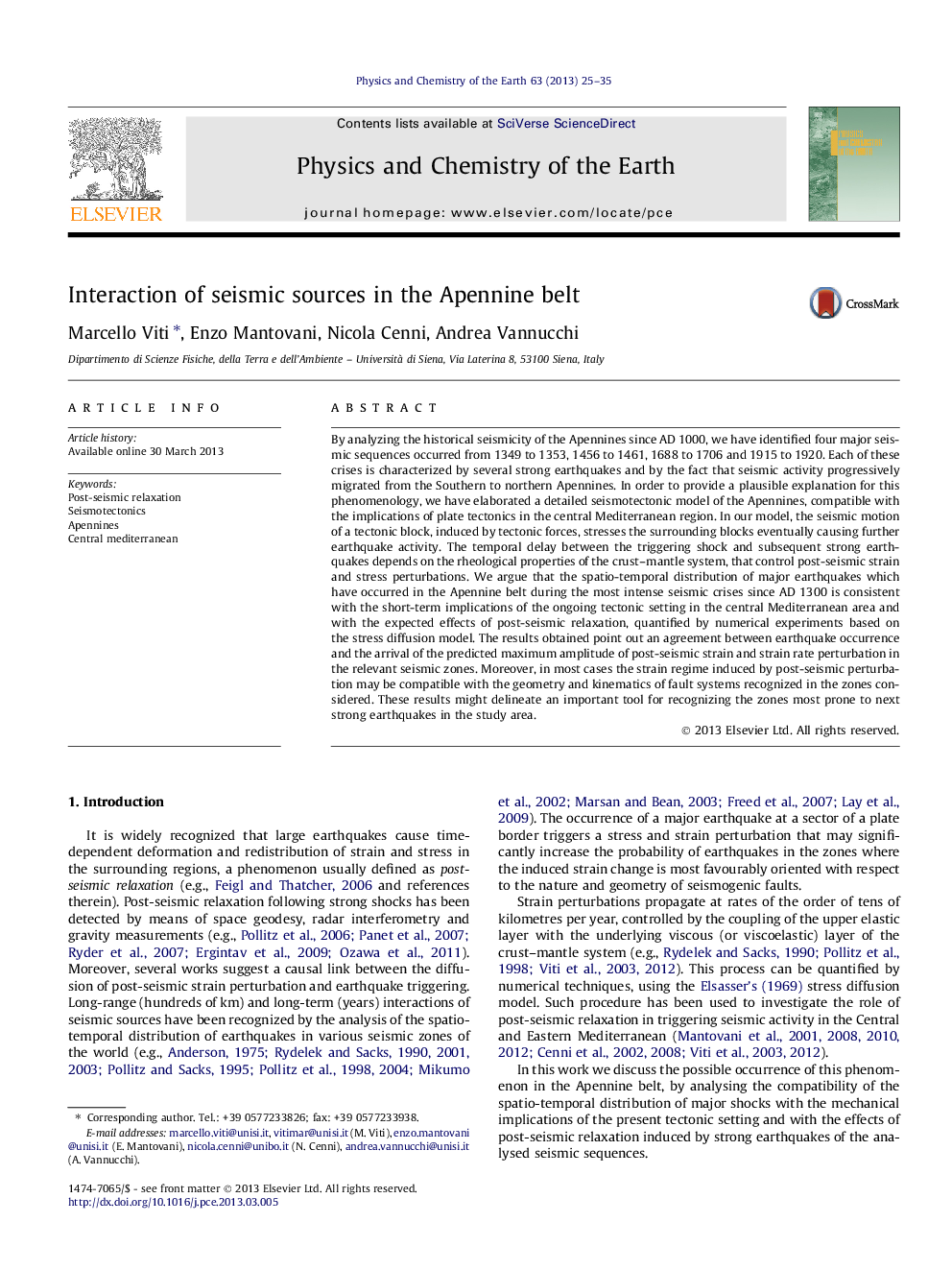| کد مقاله | کد نشریه | سال انتشار | مقاله انگلیسی | نسخه تمام متن |
|---|---|---|---|---|
| 4721046 | 1639360 | 2013 | 11 صفحه PDF | دانلود رایگان |
• A major earthquake may influence the occurrence of next strong shocks.
• Interaction of seismic sources may be related to post-seismic relaxation processes.
• We investigate four major seismic crises occurred in the Apennines since AD 1300.
• Block kinematics and post-seismic perturbation account for observed seismicity.
By analyzing the historical seismicity of the Apennines since AD 1000, we have identified four major seismic sequences occurred from 1349 to 1353, 1456 to 1461, 1688 to 1706 and 1915 to 1920. Each of these crises is characterized by several strong earthquakes and by the fact that seismic activity progressively migrated from the Southern to northern Apennines. In order to provide a plausible explanation for this phenomenology, we have elaborated a detailed seismotectonic model of the Apennines, compatible with the implications of plate tectonics in the central Mediterranean region. In our model, the seismic motion of a tectonic block, induced by tectonic forces, stresses the surrounding blocks eventually causing further earthquake activity. The temporal delay between the triggering shock and subsequent strong earthquakes depends on the rheological properties of the crust–mantle system, that control post-seismic strain and stress perturbations. We argue that the spatio-temporal distribution of major earthquakes which have occurred in the Apennine belt during the most intense seismic crises since AD 1300 is consistent with the short-term implications of the ongoing tectonic setting in the central Mediterranean area and with the expected effects of post-seismic relaxation, quantified by numerical experiments based on the stress diffusion model. The results obtained point out an agreement between earthquake occurrence and the arrival of the predicted maximum amplitude of post-seismic strain and strain rate perturbation in the relevant seismic zones. Moreover, in most cases the strain regime induced by post-seismic perturbation may be compatible with the geometry and kinematics of fault systems recognized in the zones considered. These results might delineate an important tool for recognizing the zones most prone to next strong earthquakes in the study area.
Journal: Physics and Chemistry of the Earth, Parts A/B/C - Volume 63, 2013, Pages 25–35
